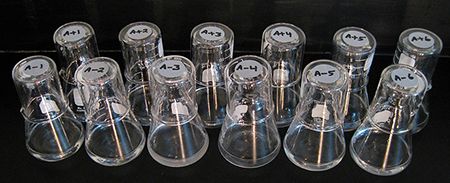






 MICROBES & PLANTS HIGHLIGHTS

|
With all the excitement surrounding the giants of the past, we rarely consider the much smaller, even microscopic creatures that started it all. Bacteria and plants existed long before any other life and set the stage for more complex and larger life forms like us, particularly via the establishment of an oxygen-rich atmosphere. By looking at these ancient microbes and plant colonies, we can inquire further into our own beginnings and the chemical origin of life itself. Fossil stromatolites offer us insight into the earliest life on Earth, 3.5 billion years ago. They don't look like much - simple globules of colonized bacteria - but stromatolites reveal the basic constituents of early evolution and potentially the development of photosynthesis, which provides nearly all the energy for life on Earth. Perhaps most exciting are the recent successes in reviving ancient bacterial species, some over 100,000 years old. These discoveries show us that fossil rock and amber aren't the only places to find DNA - ice is also a means of preserving centuries of tissue, even whole organisms in this case. A recent study even suggested that a modern avian virus may have been around for over 19 million years. 
|
|
|
Richard Lenski's E. coli Long-term Experimental Evolution The Lenski experiment has been an ongoing observation of 12 isolated cultures of E. coli bacteria. Started in 1988, the original 12 cultures continue to extend their lineage to modern day, with some interesting changes in the process. Over 50,000 generations later, the cultures show incredible diversification and even evolution in action, including myriad adaptations. |
New York Times Synthetic Life? To better recognize extraterrestrial life should they come upon it, scientists are working to create simple life forms in a lab. But, as Dennis Overbye reports, they first have to agree what life is. |
Miracle Planet Life Indestructible This special series looks at the possibility of life evolving in ice. The narrator discusses the recent discoveries of ancient bacteria, revived from ice cores tens of thousands of years old. |